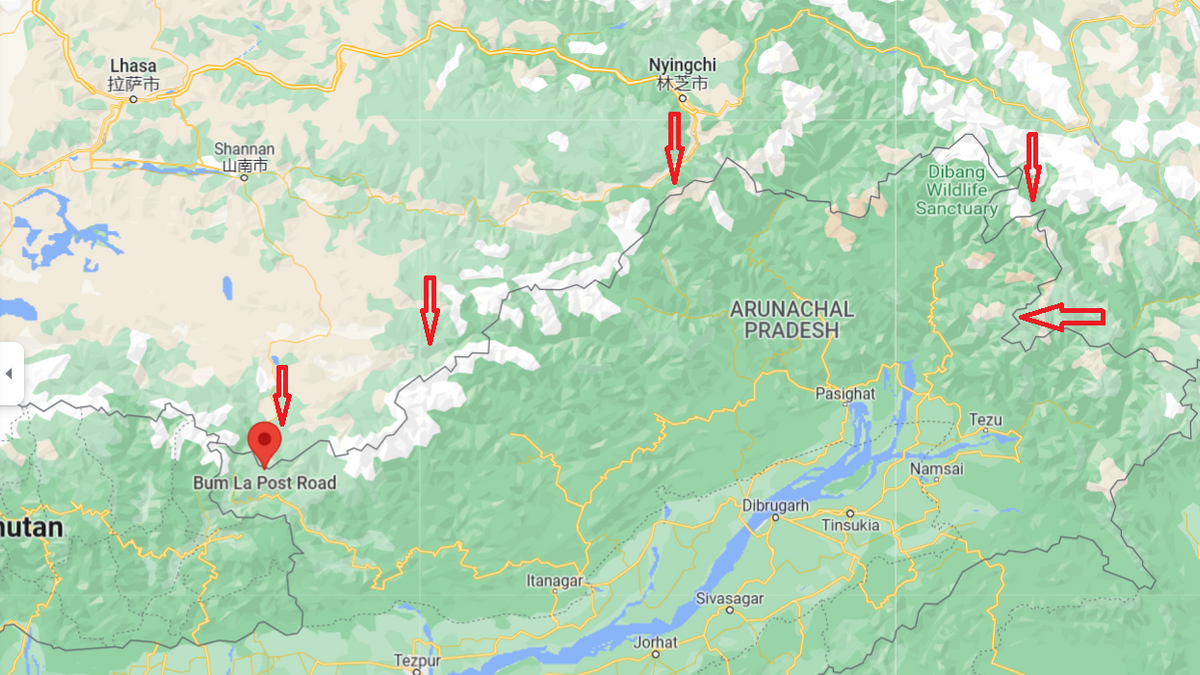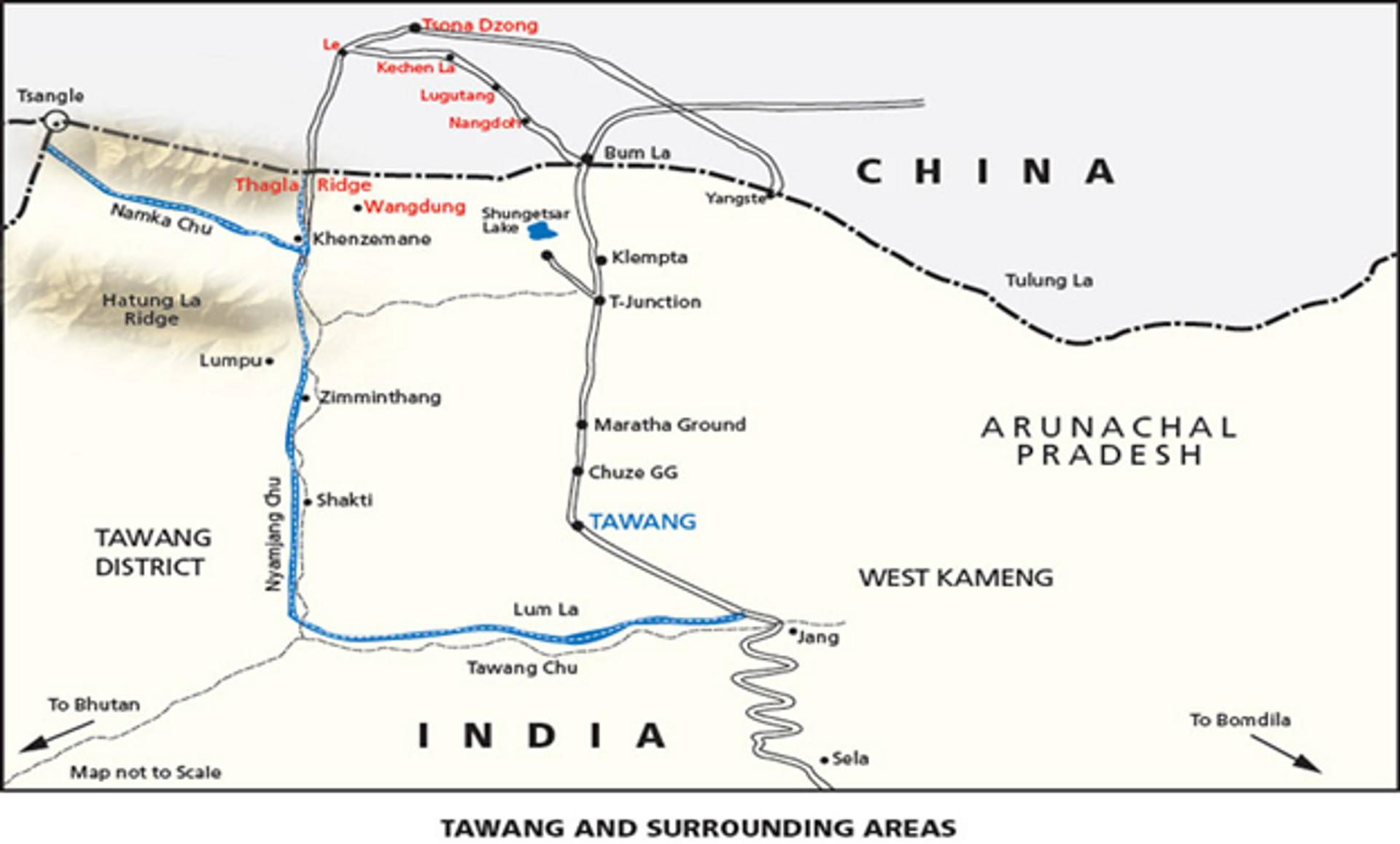
Another Chinese PLA Misadventure at Tawang Sector
One more instance of Chinese misadventure has come to the light at the Yangtse ridge line in Tawang sector of Arunachal. It is understood that several hundred of the Chinese troops tried to occupy the ridge/pass but Indian Army thwarted their effort. It again came to be a physical engagement similar to the ones of the past in Sikkim region. It is understood that several troops on both sides sustained injuries and finally the PLA was compelled to retreat. A larger question arises as to why such Chinese intrusions are happening every now and then. It is also believed that the Chinese PLA is indulging in such activities at all major strategic points, all along the LAC. Just a few months back, they succeeded in constructing three villages with permanent infrastructures for their troops in the Doklam area. It became a major embarrassment for Modi Govt although Bhutan govt declined to counter the PLA move.
Why is our forces (both Army & ITBP/BSP) unable to keep a timely strict vigil that subsequently poses enormous problems in pushing them back? We witnessed it happening in Kargil sector which led to the Kargil war with Pakistan. It happened in 2013 in Depsang plains when Chinese forces camped for 3 weeks in Indian territories of Daulat Beg oldie, Karakoram and even beyond. Indian govt had to seek their retreat which they did BUT only partially; permanently occupying about 450 Sq Km of Depsang plains. We lost the vigil in Eastern Ladakh in 2019-20 as a result of which they occupied a large part of territories on the northern side of the Demchok, Pangong lake, Hot Spring, Ghogra, Galwan that resulted in a major escalation, that is yet to be fully resolved. Why is our military intelligence and vigil on the international borders so weak that we are unable to monitor the Chinese military movements? How does Indian Army and Raksha Mantralay accept these recurrent lapses? Why accountability is not sought. We know it is a sensitive issue but why the lack of vigilance on international borders not be ensured for which the Indian Army pays dearly at a later date?
There is no doubt Indian defence forces did obstruct Chinese invasion in eastern Ladakh in Jun 2020 but it is also true that Chinese incursions in to the Indian territories have not stopped. There were recent reports of transient Chinese intrusions in Arunachal and Uttarakhand. Since 1990s. Trig heights, Demchok (Ladakh); Barahoti (Uttarakhand); Namka Chu, Sumdorong Chu, Yangtse, Asaphi La, Longju-Bisa (North-East) have remained on their radar of invasion. In the 2000s, they have gained notoriety of intruding in Kaurik, Mumri-Gogri, Shipli La, Pangong & Depsang areas in the west and Dichu-Dibang-Lamang areas in the North-East. The present misadventure in Yangtse is part of the same effort. With the construction of our highway to Lipulekh, a Chinese reaction (duly assisted by Nepal) could be expected. As long as the International border remains undefined, Chinese intrusions can be expected to continue…either transiently followed by a complete retreat (in hours or days) or their old tactics of two step forward and one step back…the perfect Chinese expansionism of Salami Slicing against neighbors whether India, Vietnam, Japan, Philippines, Indonesia or someone else.
After 2014 Modi Govt’s initiatives on the construction of the border roads and allied infrastructure, the Chinese PLA is somewhat unnerved. They are upset that while their intrusions used to go unnoticed in past, now they are detected in most instances. They are still able to intrude with the objective of making the residents in those areas feel unsafe, at the mercy of the PLA. More importantly, they send a message to the Indian govt that those areas belonged to them and could lay claim or at least declare it as disputed for future claims. Most of the time, after the Indian Army reacts, they retreat. Since international border is not demarcated, it continues happening to the advantage of the PLA.
India must take note of the Chinese intent. All these taking place after Galwan and Pangong incidents, clearly show that Chinese expansionism policy has not changed. The recent incident of Barahoti in Uttarakhand cannot be termed a usual patrol that both nations undertake along the ill-defined LAC. In all these incidents, there were approx. 100 PLA soldiers which is far more strength than a dozen of the patrol parties undertake and secondly, they have inflicted damages to our infrastructure, the bridge.
Why have we been so wanting on monitoring the enemy movements and incursions across LAC? Why can’t we provide feasible alternatives? Civil Defence Groups formed by village-clusters within 20 km of the LAC all along ~3500 Km is the need of the hour. These groups of villages could be provided newly acquired cheap and effective surveillance Drones operating on a daily or ‘as and when required’ basis to keep vigil and collect intelligence/images duly transmitted to and monitored by the regional bases of Rapid Action Military Forces (a part of MSF). If PLA movements/threats are perceived anywhere, our forces could be dispatched to the exact location at the earliest hint of impending intrusion. What prevents us from using our Cartosat or other Earth Observation / military satellites in picking the PLA movements? Why can’t a hybrid Air-cum-terrestrial defence radar with elements of air-cum-ground defence artillery be raised/deployed all along the LAC?
The recent foray of the PLA towards Yangtse ridge in the Arunachal sector is their strategic move because from there PLA can keep an eye on the entire Tawang sector. This ridge is also connected by their road on which smaller military vehicles can move easily. There being no major road on the Indian side, Indian response to their intrusion is invariably likely to be delayed or inadequate to say the least. However, this time India could thwart their move effectively but they may make misadventure again. It is expected that the Ministry of External Affairs would summon the Chinese ambassador and give a firm dressing-down. Indian approach towards the Chinese has remained passive and reactive for far too long. The time has come when they must become proactive. Indian Defence Ministry and our Armed Forces must speak the language PLA understands. If China believed that only they can declare a territory as disputed and lay claims, they must be proven wrong. The MSF must be utilsed to lay limited seize of disputed Chinese territories every now and then and vacate if the Chinese prove their claims. It is high time India must adopt a firm and proactive approach against the Chinese in their own language till they agree to resolve the international border. The subtle Indian approach has yielded no result after the 5 bilateral agreements signed 2-3 decades back.
It is a universal truth and habitual fact that the military might of a nation invariably transforms into the power projection of its Armed Forces…something that we are unable to see clearly. Time has come when the Armed Forces of New India must change its strategies approach from largely passive defence to active/offensive proactive defence. It is true that India doesn’t believe in occupying others’ territories but that doesn’t mean that we should not create enough fear and apprehension in the mind and souls of our enemies to refrain from such indulgence.
JAI HIND!!!


